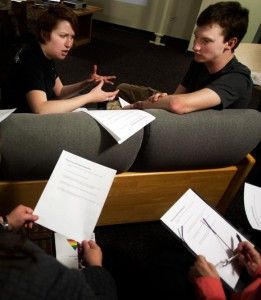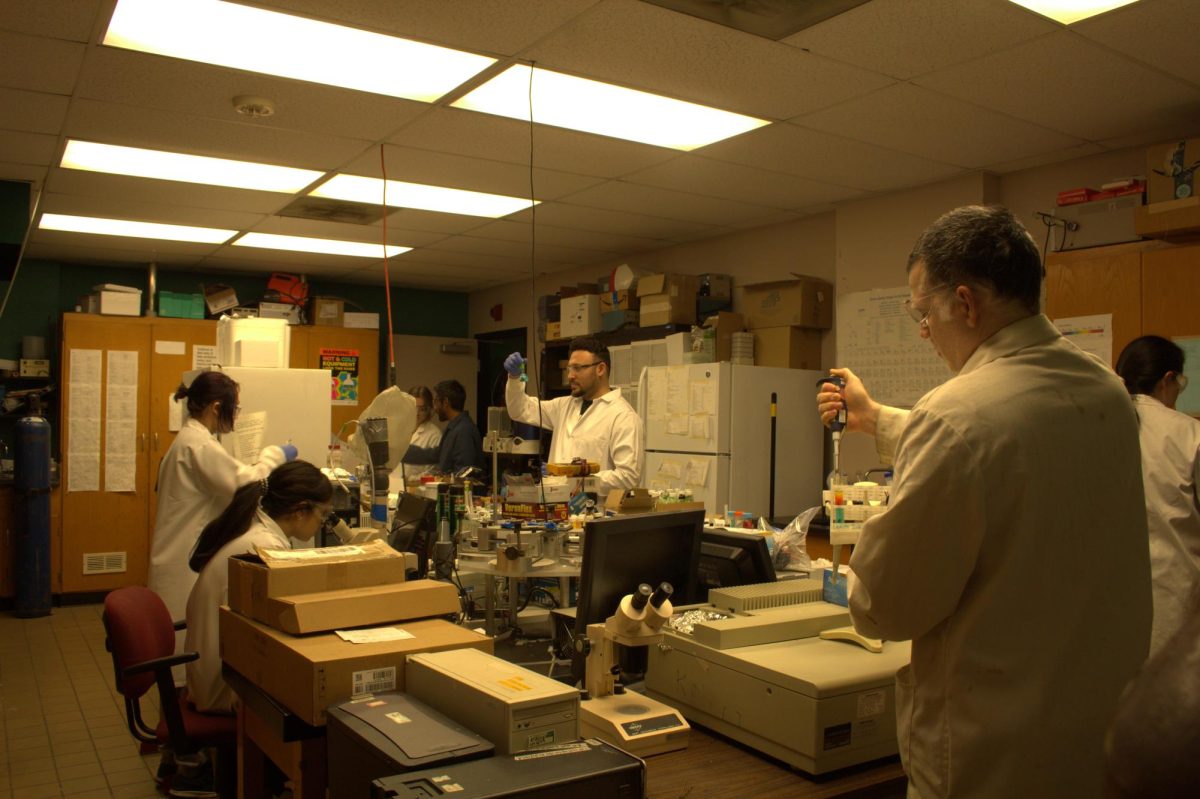GLBT Safe Zone training in demand

February 7, 2012
At Monday’s Safe Zone training, students were advised to listen to each other, learn about the gay-straight alliance, reflect on what they learned and respect each semester.
Safe Zone training is a program organized by Wendy Weinhold, coordinator for the GLBT Resource Center, to provide a safe and welcoming environments in the workplace, school and other places for the gay, lesbian, bisexual and transgender community.
Weinhold, said SIUC is recognized as one of the nation’s first and leading GLBT-friendly campuses. She said attendees can get a Safe Zone plaque after training to display they’ve been through the program.
Advertisement
Weinhold said she has seen an increase in requests for the training so far this semester.
“There’s been a growing recognition of the value of identifying ourselves as progressive thinkers,” she said.
Weinhold said she thinks the media attention to the repeal of “Don’t Ask Don’t Tell” — a law prohibiting GLBT people to be open about their sexuality in the military — also helped with awareness of the Safe Zone.
Amber Manning, a graduate assistant for University College, said while the training wasn’t required of employees, she wanted it offered to them.
“It generates and fosters pertinent dialogue to the university community, and we really want to promote safe spaces for our students,” she said.
Manning said because University College works primarily with first-year students, she thought it was a good opportunity for the new students to feel comfortable. She said she coordinated a few trainings last week and four this week for employees.
During the training Monday night at Neely Hall, Weinhold explained several terms associated with GLBT such as an ally, someone who supports the GLBT community.
Advertisement*
She also explained while sex refers to the genitals a person has, gender refers to performance such as gestures, clothing, hairstyles and more. She said hate crimes in the past have been committed for reasons as small as a man sitting with his legs crossed or a woman wearing a baseball cap.
The terms for sexual identity are constantly changing, though, Weinhold said, just like a person’s identity changes.
“Who I am now is not the same as who I was three months ago,” she said. “I certainly am not the same as I was a year ago. All of us have that privilege. We need to allow members of the GLBT community to have that privilege, too.”
Sarah Self, a senior from Lafayette, La., studying university studies and a trainer for Safe Zone, said she wrote the new materials for the program.
“I’m a genderqueer and the old materials didn’t really do a good job with that side of things,” she said.
Self said she originally just wanted to update the genderqueer section but realized the whole terminology section was outdated, so she took on the job of updating them.
Attendees really like the terms section, she said, because they often have heard terms like GLBT or transgendered but don’t actually know what they mean. Self said the resident assitants especially are bewildered because students come out in the dorms or roommates have trouble with each other over sexuality differences.
“Even this simple one-hour training makes them feel like they have a right to say something,” she said.
Self said reworking the material, as well as the aspect of public speaking, has been a great experience for her. The biggest benefit of the training, she said, is the plaque given out after because it makes the campus at large feel safer. She said it’s important to know that Safe Zone training isn’t the end of preparation for gay-straight alliances.
“Something we stress in training is that Safe Zone prepares you to be a listener,” she said. “It prepares you to be an ally and to be there, but it doesn’t make you an expert.”
Advertisement









